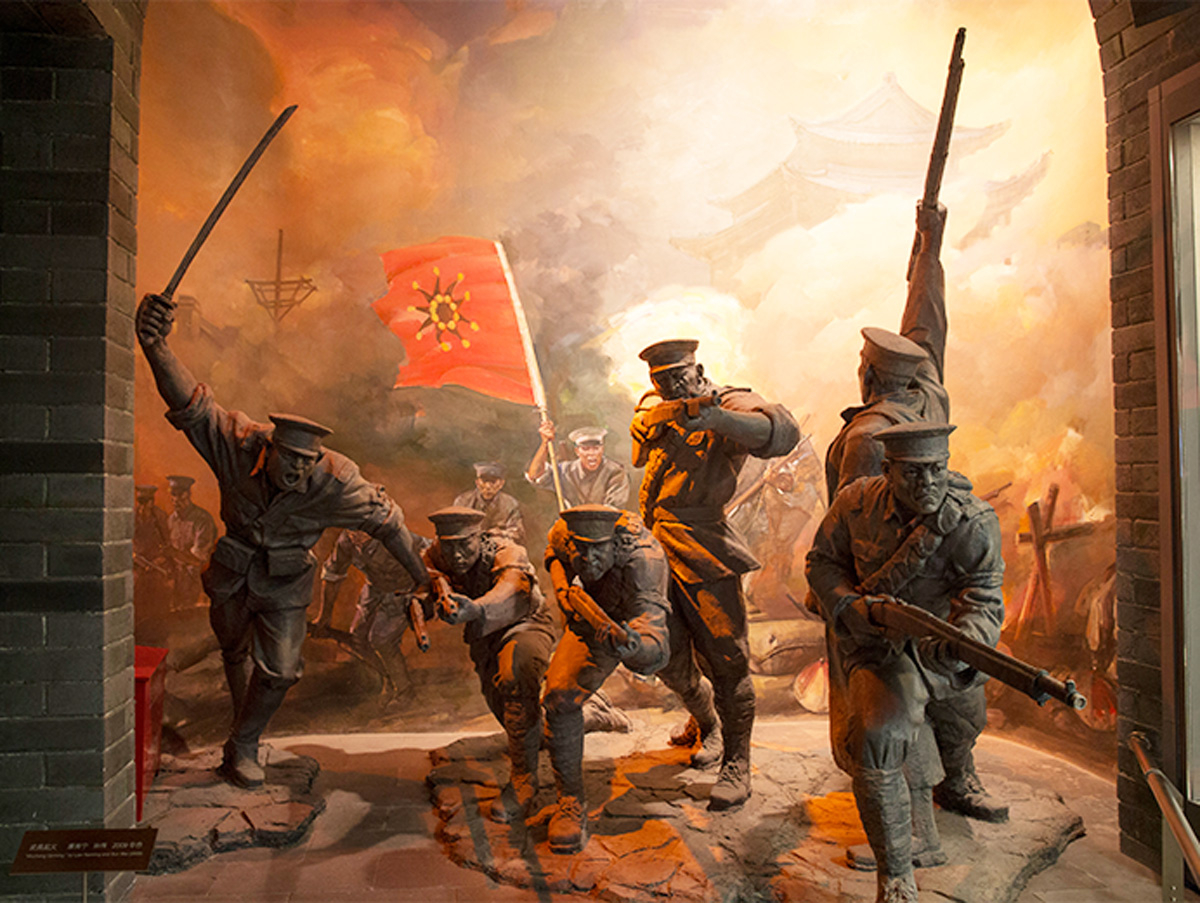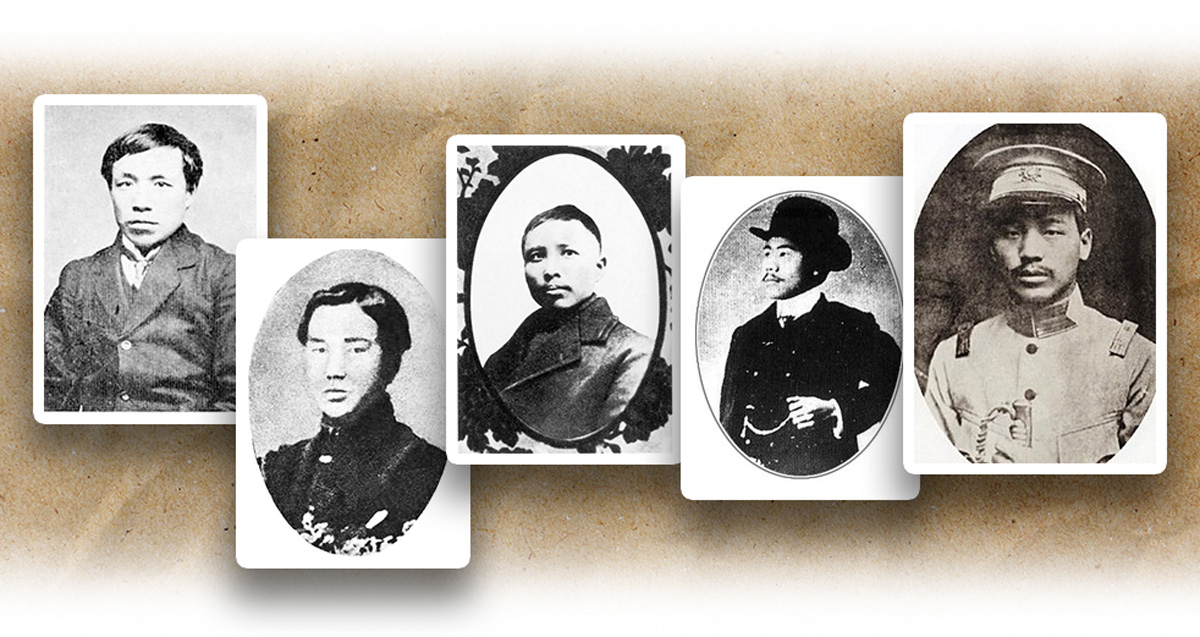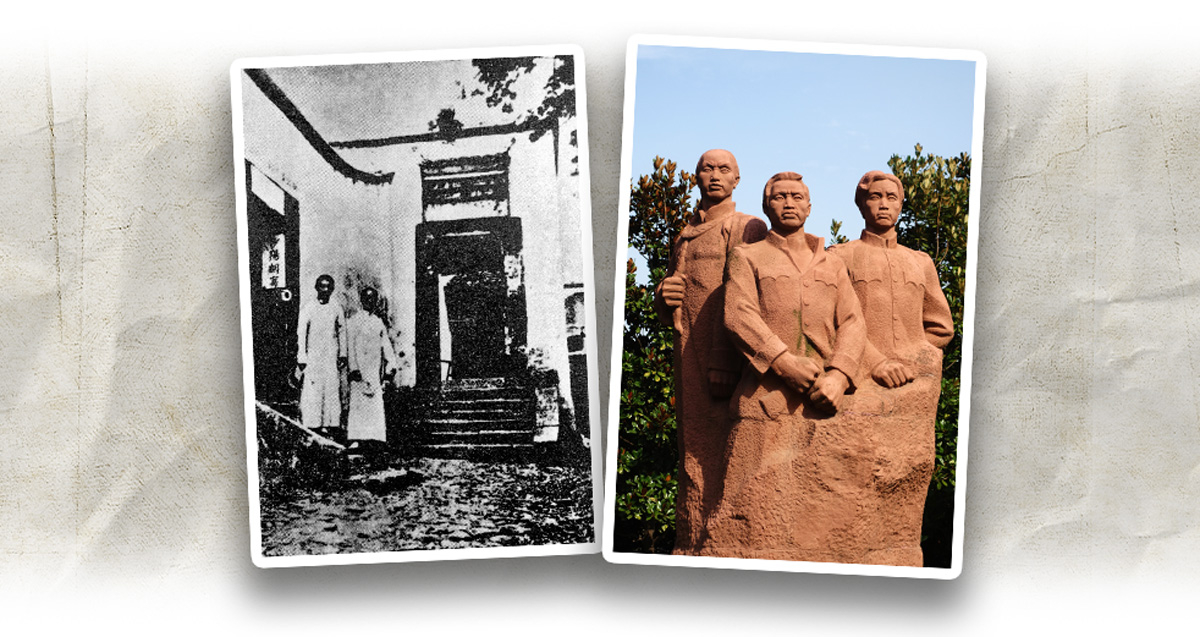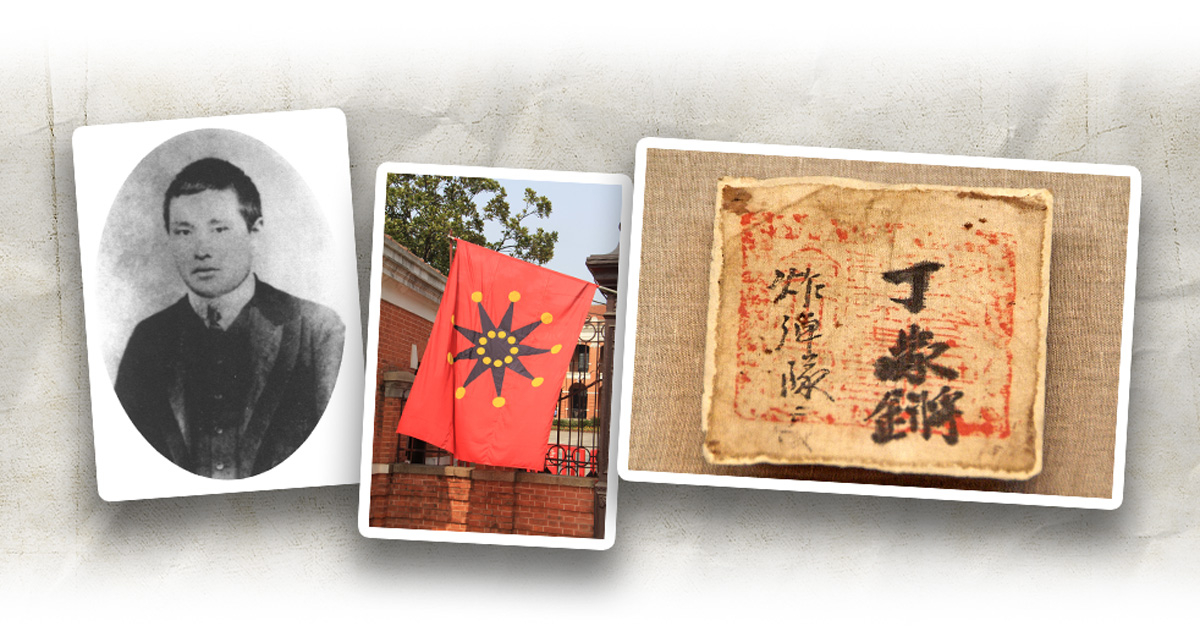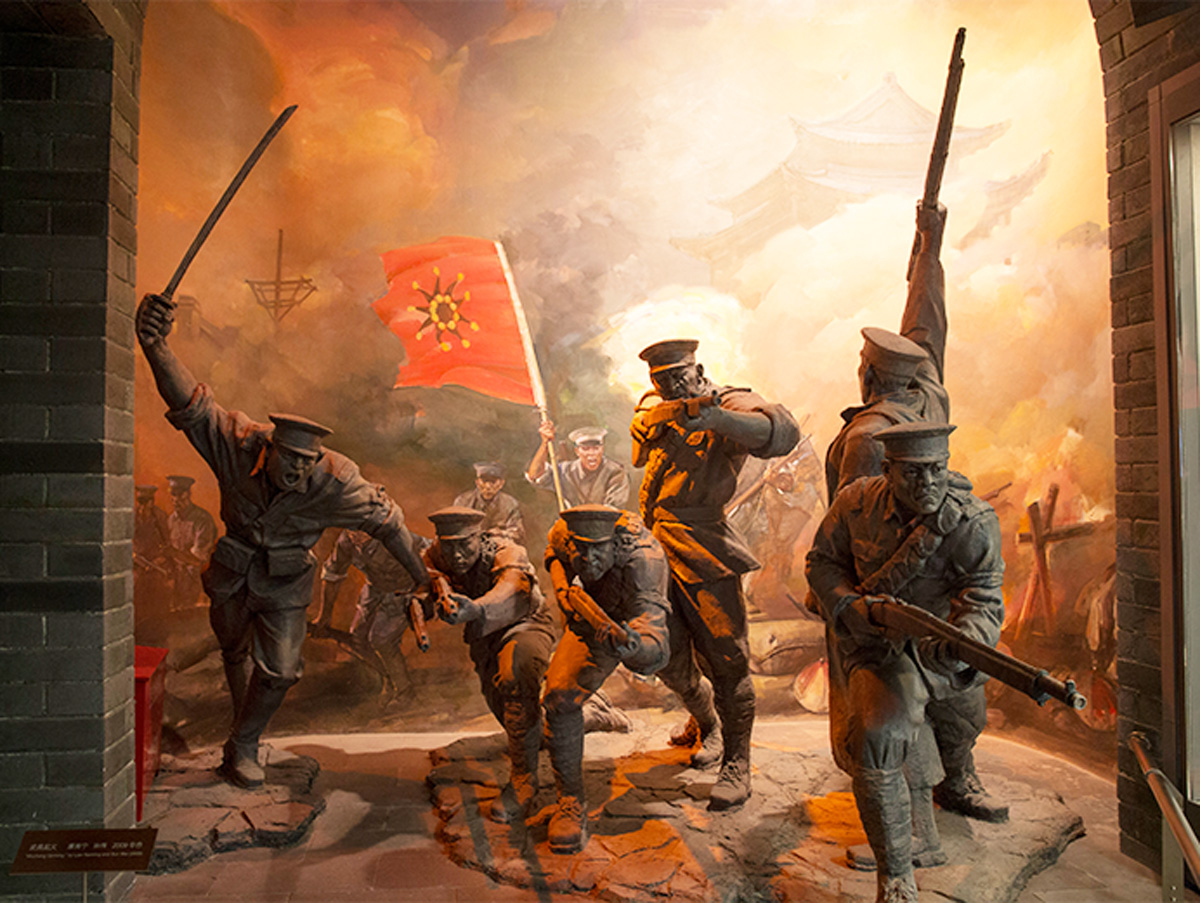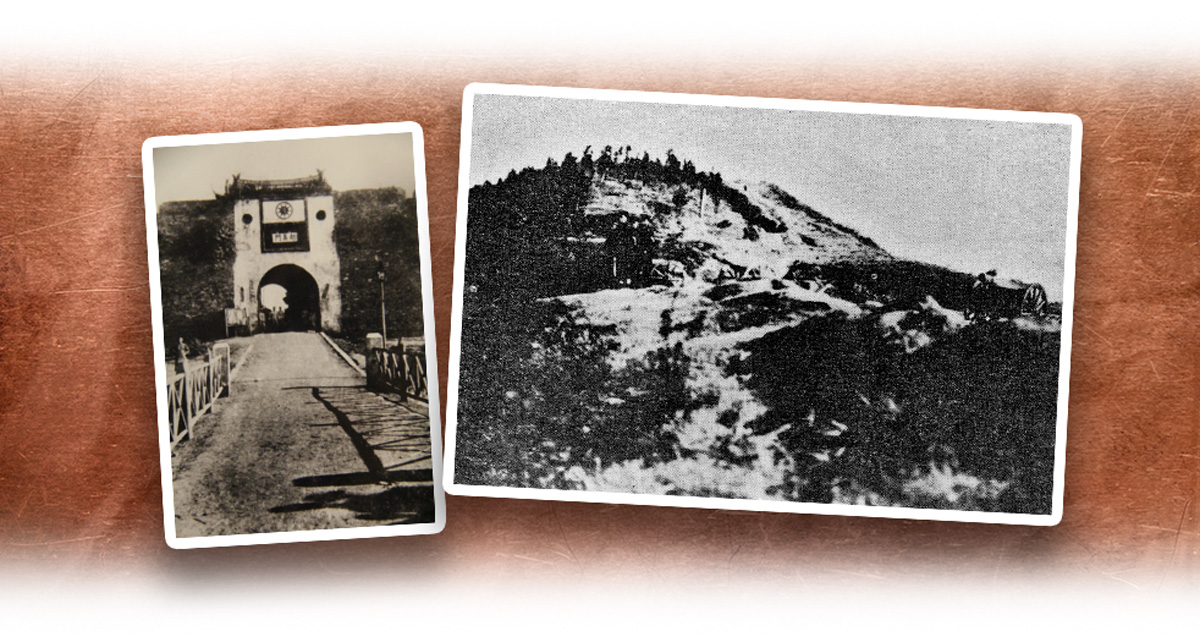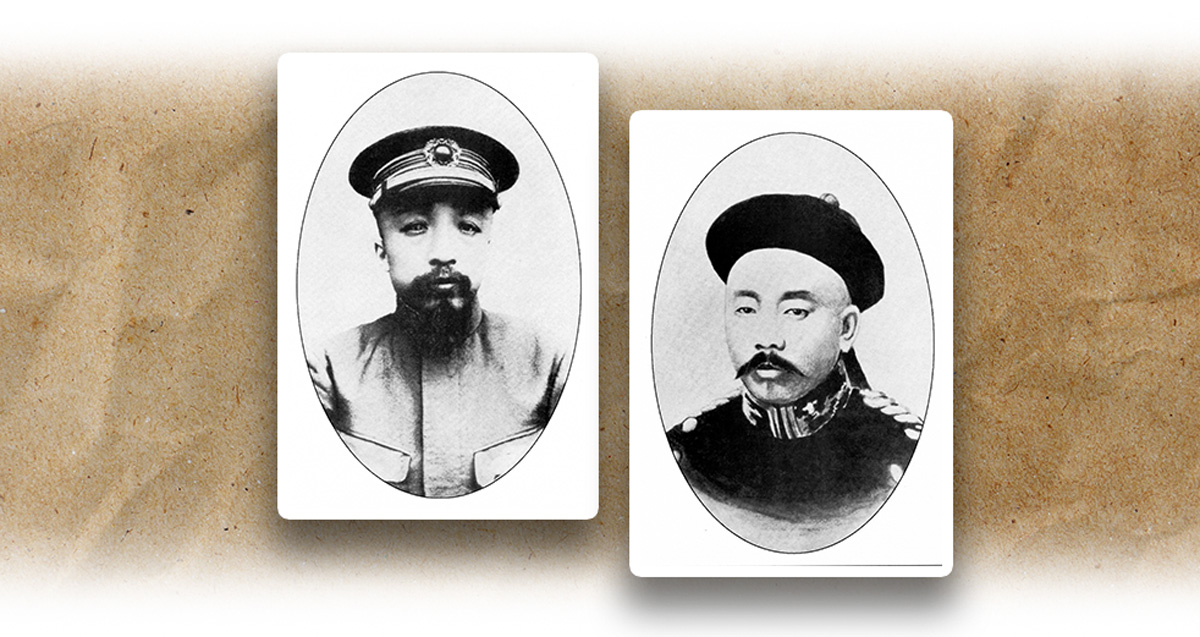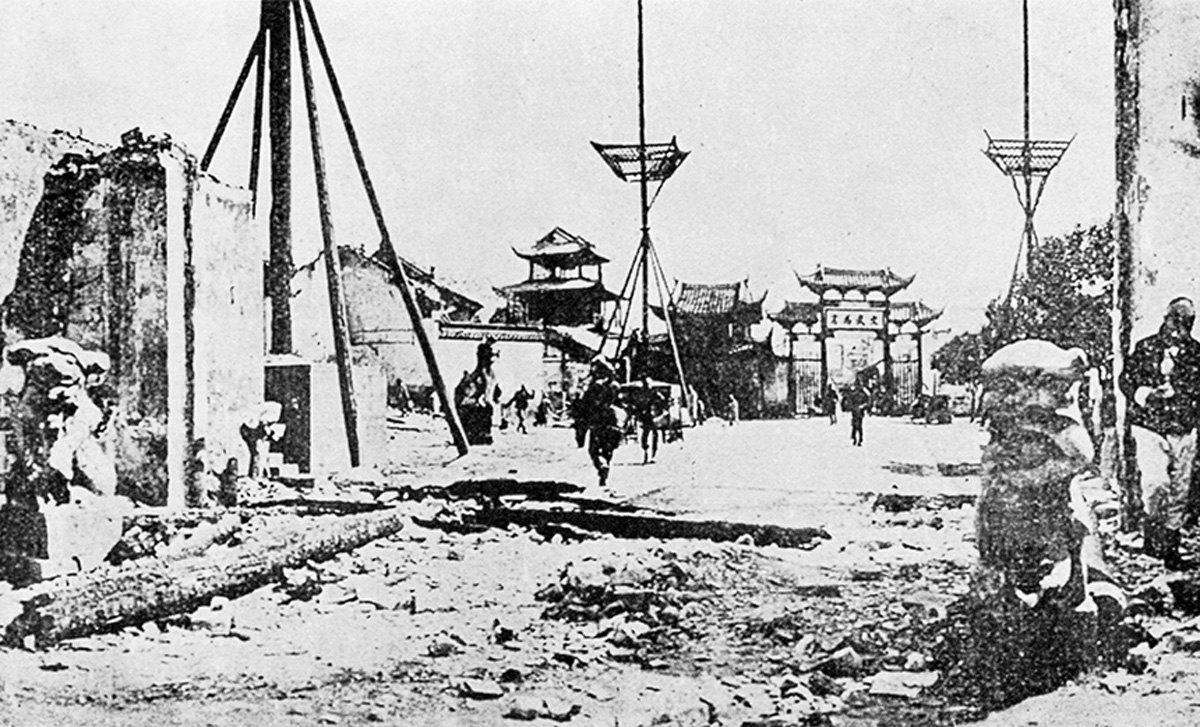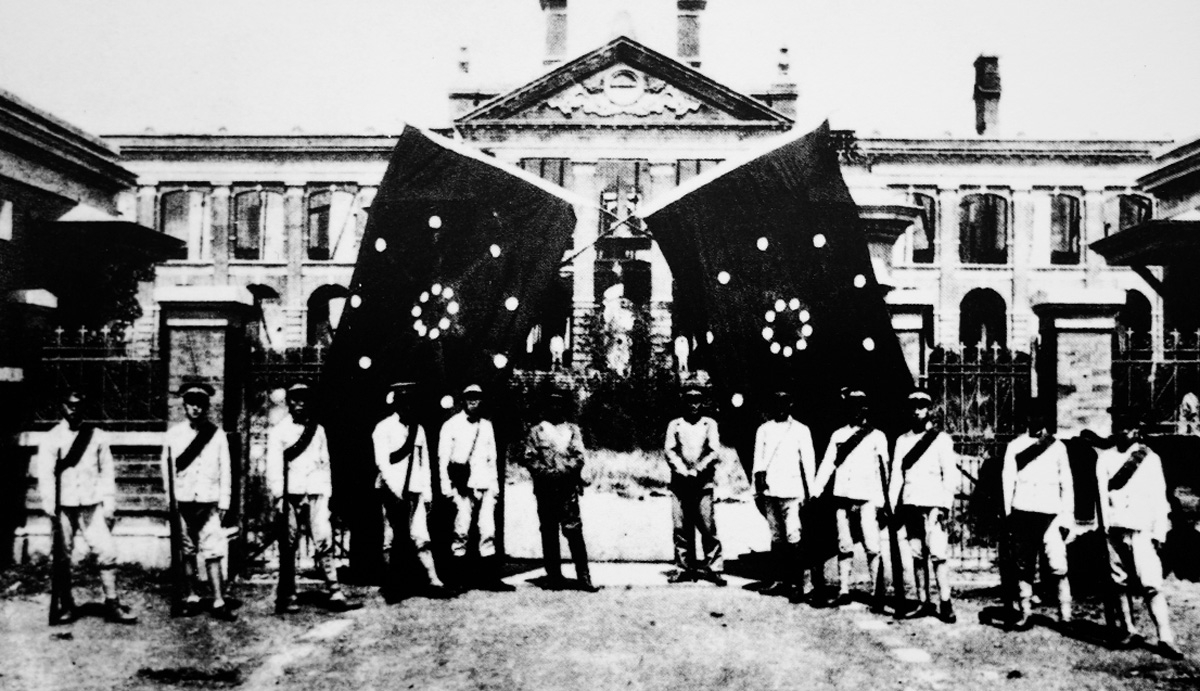The Wuchang Uprising (武昌起義) that led to the fall of the Qing dynasty took place in 1911, or the Xinhai (辛亥) year in the Chinese lunar calendar. Thus, the ensuing revolution became known as the “Xinhai Revolution (辛亥革命)”. Several years prior to the uprising, two revolutionary societies - the Literary Society (文學社) and the Progressive Association (共進會) - had infiltrated the Hubei New Army (湖北新軍) to build up support for the revolution. As a result, the revolutionaries had some 5,000 supporters within the new army. Hubei’s weakened defences due to the ongoing Railway Protection Movement presented an opportunity to the uprising.
In September 1911, Jiang Yiwu (蔣翊武) and Liu Fuji (劉復基) of the Literary Society decided to join forces with Sun Wu (孫武), Jiao Dafeng (焦達峰), Cai Jimin (蔡濟民), and other members of the Progressive Association to establish a unified leadership. It was decided that the uprising would take place on 6 October, the Mid-Autumn Festival. Later, it was postponed to 16 October. The revolutionaries were secretly manufacturing bombs in the Russian Concession in Hankou (漢口). However, they inadvertently set them off. Drawn by the explosion, the Russian police force arrived on the scene and arrested several people. They also seized the membership registers with the names of revolutionaries within the Hubei New Army on. With the information, Ruicheng (瑞澂), the Viceroy of Huguang (湖廣), ordered a mass arrest. Many revolutionaries were captured or forced to flee. Among them, Liu Fuji, Peng Chufan (彭楚藩), and Yang Hongsheng (楊宏勝) were beheaded in the morning of 10 October. Knowing that their own lives were at stake, the revolutionaries among the Hubei New Army were forced to act ahead of schedule. The Eighth Engineering Battalion of the Hubei New Army, led by Xiong Bingkun (熊秉坤), acted by firing the first shot of the revolution in the evening of 10 October.
After a nightlong fight, the revolutionaries captured Wuchang to discover that the viceroy and the Commander in Chief Zhang Biao (張彪) had already made their panicked flight. The revolutionaries went on to capture Hanyang (漢陽) and Hankou (漢口) on 11 and 12 October respectively, bringing the Three Towns of Wuhan (武漢三鎮, Wuchang, Hankou, and Hanyang) under the revolutionary banner. As the original leadership of the uprising had either fled or been killed, Li Yuanhong (黎元洪), the Brigade Commander of the former Qing army, was chosen as the Provisional Military Governor of Hubei. Soon, numerous provinces answered the call to renounce the Qing government and declare independence. In no time, the Qing regime fell apart.
|
|
Why is Sun Yat-sen (孫中山) widely recognised as the leader of the 1911 Revolution when the Wuchang Uprising was planned and launched by the Hubei revolutionaries? |
|
|
See answer below. |
During the late Qing dynasty, every province formed new armies in earnest. The revolutionaries gradually infiltrated these new armies to recruit new members. A growing number of soldiers came to support the revolution and formed societies within the armies to carry out secret activities. Pictured are the key members of two revolutionary organisations - the Literary Society and the Progressive Association - in the Hubei New Army. From the left: Jiang Yiwu and Liu Fuji of the Literary Society; Sun Wu, Jiao Dafeng, and Cai Jimin of the Progressive Association.
On the left: No. 11 Yanzhi Lane (胭脂巷), the site where the uprising was supposed to take place on the day of the Mid-Autumn festival. On the right is a sculpture of the three revolutionary martyrs - Peng Chufan, Liu Fuji, and Yang Hongsheng - located at Shouyi Plaza (首義廣場) in Wuchang District, Wuhan. On 24 September 1911, at a joint meeting held by the Literary Society and the Progressive Association at No. 11 Yanzhi Lane, it was decided that the uprising would be launched on 6 October, the Mid-Autumn Festival. It was later postponed to 16 October. When their plan was leaked on 9 October, the revolutionaries Peng, Liu, and Yang were arrested by the Qing military and executed the next morning.
Knowing that they would face certain death if they did not move fast, the revolutionaries decided to act ahead of schedule and launch the uprising in Wuchang. From left to right: Xiong Bingkun, the leader of the Eighth Engineering Battalion of the Hubei New Army; the flag used by the Wuhan revolutionary army, and an arm badge of its bomb squad.
In the evening of 10 October 1911, the Wuchang Uprising fired the first shot of the 1911 Revolution.
Pictured on the left is Wuchang’s Zhonghe Gate (中和門). It was later renamed Qiyi Gate (Uprising Gate﹝起義門﹞). Pictured on the right is Snake Mountain (蛇山), an important high ground in Wuchang. During the evening of 10 October, the revolutionary army entered the city through Zhonghe Gate, seized Snake Mountain and other strategic locations, and fired upon the viceroy’s office with cannons set up at the gate tower and Snake Mountain.
From left to right: Ruicheng, who served as the Viceroy of Huguang at the time of the Wuchang Uprising, and the Commander in Chief Zhang Biao. As the revolutionary army advanced on the viceroy’s office by three columns, they abandoned the city and fled.
After a nightlong fight, the revolutionary army succeeded to capture the viceroy’s office (pictured), effectively controlling over Wuchang.
The revolutionary army stationed at Hankou during the 1911 Revolution. The army captured Hanyang and Hankou on 11 and 12 October respectively.
The revolutionary army posing in front of the headquarters of the Hubei Military Government. On 11 October, the Hubei revolutionaries established the Hubei Military Government in Wuchang and selected Li Yuanhong as the governor.
Li Yuanhong, a brigade commander of the former Qing army, was not a revolutionary. When the uprising broke out, he hid in a friend’s home. As the original leadership of the uprising had fled or been killed, the revolutionary army was in desperate need of a leader. They therefore selected Li as an interim governor of the Hubei Military Government. Initially an unwilling participant in the revolution, Li later became the Vice-President and subsequently the President of the Republic of China.
The establishment of a military government in Jiangxi Province (江西). Merely two months after the Wuchang Uprising succeeded, a dozen provinces answered the call for revolution. They declared independence from the Qing rule successively and established a military government like Hubei. The revolutionary movement spread nationwide and became known as the “1911 Revolution”. It put an end to the 260-plus years of Qing reign, and relegated the autocratic monarchy that had ruled China for more than 2,000 years to history. On 1 January 1912, the Republic of China was officially established.
|
|
Why is Sun Yat-sen widely recognised as the leader of the 1911 Revolution when the Wuchang Uprising was planned and launched by the Hubei revolutionaries? |
|
|
The anti-Qing Wuhan Uprising of 1911 was indeed organised by the Literary Society and the Progressive Association. It took place when Sun Yat-sen was busy making his fundraising rounds overseas. However, the key to leading a successful revolution lies in coordinating issues such as politics, advocacy, organisation, military, fundraising and so on. The coordination was undertaken by the United League (中國同盟會) founded by revolutionaries including Sun. The League was the indisputable leader of the anti-Qing movement. With its long history of supporting the revolution and its track record in staging numerous uprisings, the League deserved credit for laying the groundwork for the revolution’s success. After the establishment of the Republic of China, Sun was unanimously elected to be the provisional president, leaving little doubt that he was the de facto leader of the revolution. The claim that Sun and the League led the 1911 Revolution is well justified. |
Source of most photos used in this feature piece: Fotoe




